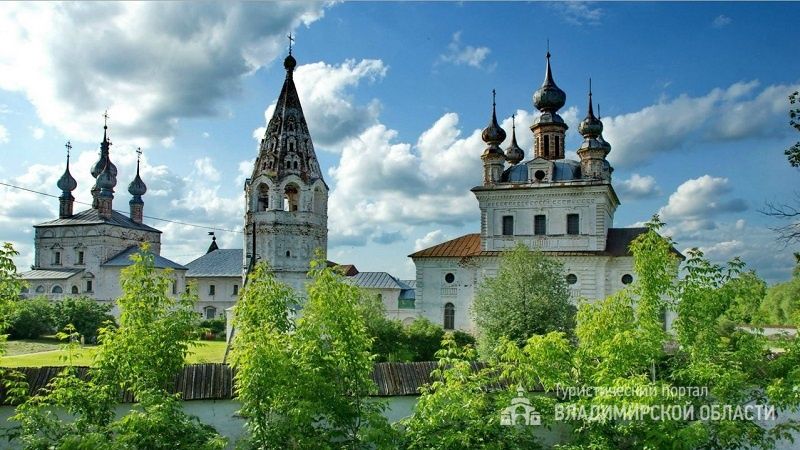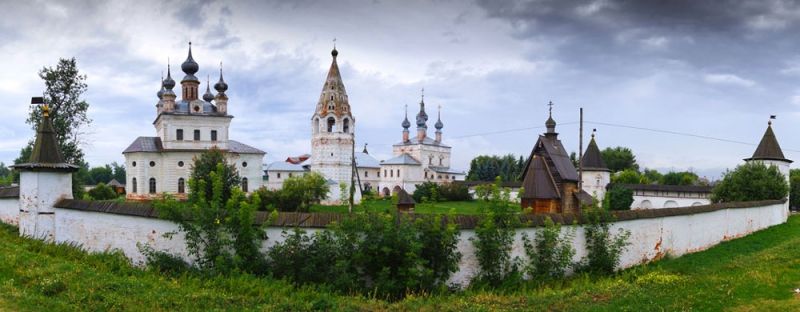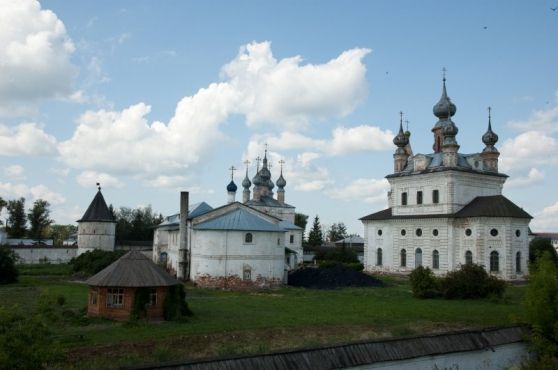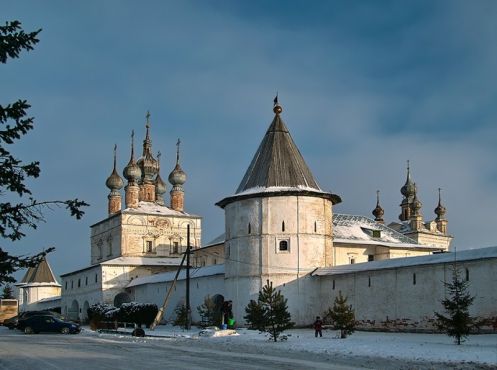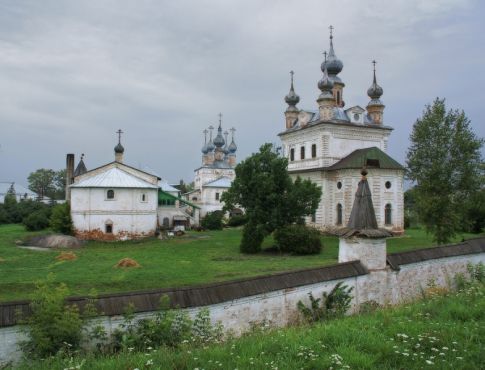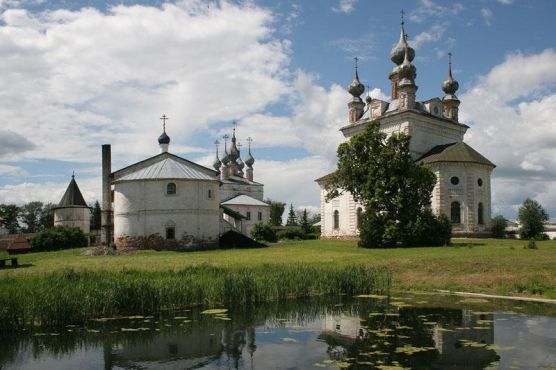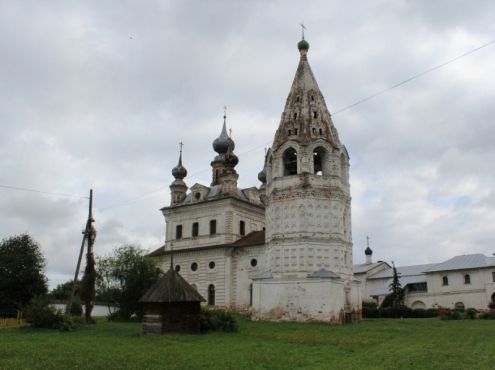Monastery of Michael the Archangel
- Address:
- Yuryev-Polsky, 1 May street, 4
- GPS:
- 56.49802146, 39.68188964
- Phones:
- +7 (49246) 2-28-48, +7 (49246) 2-38-87
In 1212, Yuryev-Polsky became the center of a small estate belonging to the son of Vsevolod III and grandson of Yury Dolgoruky – Svyatoslav. At this time the princely Monastery of Michael the Archangel was founded in the town. In 1238 the troops of Khan Baty during the capture of Yuryev-Polsky destroyed the monastery.
The dynasty of the Yuryev princes was cut short in the first half of the 14th century. The town became the property of the Moscow princes, who more than once passed it on for feeding to their foreign vassals, ruining it. It is understood that during this period there was no opportunity to rebuild the city. Almost two centuries the Monastery of Michael the Archangel stood in desolation and only in the 16th-17th centuries began to be equipped with stone buildings. The existing buildings date back to the later period, the 17th-18th centuries.
The monastery received charitable donations and gifts, including from Prince D.M. Pozharsky, who had an estate near Yuryev-Polsky – the village Luchinskoye. In 1685 tsarevna Sophia and Russian tsars Ivan V and Peter I came to the monastery on pilgrimage.
The principle of building a monastery ensemble resembles the location of the buildings of the Savior-Euthymius Monastery in Suzdal: right in front of the entrance there is a cathedral, on the sides there are a bell-tower and a refectory church. These buildings are different in their artistic significance and age. The best of them is the bell-tower of the 17th century. It has a very representative appearance: a massive octagonal pillar rises above the wide and low quadrangle, all the planes of the lower tier of the octagon are entirely covered with square grooves in the wall, and the second tier – with figured niches- kiots. The ringing arcade is framed by short and thick half-columns with huge "beads" in the middle. Above it – a majestic tent with three tiers of windows-rumors. The building is not permeated by monastic asceticism, but rather akin to the magnificent merchants’ buildings of the 17th century, which indicates the penetration of worldly folk tastes into church architecture. From the observation platform of the bell-tower you can see a beautiful view of the town of Yuryev-Polsky and its surroundings.
Other temples of the monastery are: the five-domed gate-church of St. John the Theologian (1670), as if repeating its composition the five-domed Cathedral of St. Michael the Archangel (1792-1806), the Refectory Church of the Sign (1625). They are quite typical for their time, but they fit well into the common monastic ensemble.
On the territory of the monastery there is a wooden St. George's Church (1718), brought from the village of Egorye with the aim of preserving as a monument of wooden architecture. The church is a model of three-membered temples, based on the principle of the Russian peasant's house (refectory – crate – altar). The church is cut down with an ax, without the use of saw and nails.
Part of the buildings of the monastery is the Yuryev-Polsky Historical, Architectural and Art Museum. The complex was partially returned to the church, allowing the museum and the monastery to share the area of temples and ancillary buildings.
 Tourism portal of the
Tourism portal of the